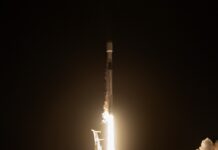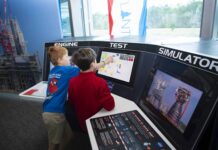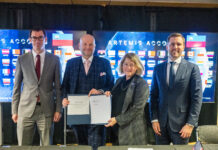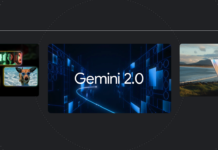NASA and NAACP Forge Partnership to Enhance STEM Opportunities for Underrepresented Students
In an inspiring move to foster diversity and inclusion within the fields of science, technology, engineering, and mathematics (STEM), NASA and the National Association for the Advancement of Colored People (NAACP) have signed a Space Act Agreement. This collaboration aims to enhance engagement and equity for students from underrepresented backgrounds who are pursuing STEM education and careers. The agreement was formalized during an event held on Thursday, signifying a significant step towards broader access to NASA’s educational resources and career opportunities.
Shahra Lambert, a senior advisor for engagement and equity at NASA headquarters, emphasized the shared commitment of both organizations to attract diverse students to STEM fields. She remarked, "NASA and the NAACP share a longstanding commitment to attracting more diverse students to STEM education and ultimately careers. This agreement reaffirms that commitment and solidifies a partnership that will enable us to expand opportunities for more students of color to build their STEM identity and gain real-world experience through NASA STEM education, mentorship, and career awareness. With the NAACP’s help we’ll be able to truly impact young minds who will be our future scientists, engineers, explorers and more."
The Space Act Agreement outlines a comprehensive plan wherein the NAACP will integrate NASA’s STEM lessons, content, and themes into its Afro-Academic, Cultural, Technological and Scientific Olympics (ACT-SO) achievement program. ACT-SO is a series of competitions in which students vie for scholarships and other incentives across various fields, including performing and culinary arts, business, and STEM disciplines. NASA, in return, will offer guidance on programming, participate in information sharing, provide mentorship, and facilitate tours of NASA facilities when feasible.
Leon W. Russell, Chairman of the NAACP Board of Directors, highlighted the historical significance of Black women in both NASA’s and the NAACP’s success. He stated, "Much like NASA, brave, brilliant, Black women were critical to the success of the NAACP. For years, we’ve worked to increase the number of diverse STEM students by providing scholarships and establishing key initiatives. Through our ACT-SO program and this new partnership with NASA, both organizations will make even greater progress to help pave the way for more Katherine Johnsons and Mary Jacksons. By enacting today’s agreement, we hope to increase the number of Black and underrepresented students in the STEM fields and help them reach for the stars."
The initial efforts of this partnership will be spearheaded by NASA’s Office of STEM Engagement. However, the agreement is designed to be flexible, allowing for further collaboration and partnership in the future. One of the specific areas that NASA and the NAACP plan to support is the agency’s Equity Action Plan. This plan focuses on making STEM education more accessible and inclusive, thereby fostering a diverse workforce that can tackle the complexities of space exploration and other scientific challenges.
NASA’s mission extends beyond exploring the universe; it also involves solving some of the world’s most intricate problems. To achieve these goals, it is crucial to create an inclusive environment where everyone has the opportunity to participate and contribute. By providing access to educational opportunities, NASA aims to inspire young minds to be curious and envision themselves as part of the agency’s future endeavors. This, in turn, will help cultivate the next generation of STEM innovators and leaders.
For those interested in learning more about NASA’s educational resources, visit the following link: NASA Learning Resources.
Good to Know: The Impact of Diverse Minds in STEM
The collaboration between NASA and the NAACP is not just about providing opportunities; it is also about enriching the STEM fields with diverse perspectives. Diverse teams bring a variety of viewpoints and problem-solving approaches, which are essential for innovation. For example, the contributions of Katherine Johnson and Mary Jackson, both of whom were pioneering Black women at NASA, were instrumental in the success of numerous space missions. Their stories have inspired countless individuals and underscore the importance of diversity in STEM.
Reactions to the Partnership
The announcement of the partnership has garnered positive reactions from various quarters. Educators, students, and STEM professionals have expressed optimism about the potential impact of this collaboration. Many believe that such initiatives are crucial for leveling the playing field and providing equal opportunities for all students, regardless of their background.
Review: The Importance of STEM Education Initiatives
STEM education initiatives like the NASA-NAACP partnership play a vital role in preparing students for the future. In today’s rapidly evolving technological landscape, a strong foundation in STEM is essential for career success. Initiatives that focus on underrepresented groups are particularly important because they help bridge the gap and ensure that all students have access to quality education and career opportunities.
STEM education not only equips students with technical skills but also fosters critical thinking, creativity, and problem-solving abilities. By engaging students in hands-on learning experiences and real-world applications, programs like ACT-SO help them develop a deeper understanding of STEM concepts and their practical implications.
Conclusion
The partnership between NASA and the NAACP is a significant milestone in the quest for diversity and inclusion in STEM fields. By combining resources and expertise, both organizations are poised to make a meaningful impact on the lives of underrepresented students. This collaboration is a testament to the power of collective effort in creating a more inclusive and equitable future for all.
For more details on NASA’s educational initiatives and resources, visit NASA Learning Resources.
For more Information, Refer to this article.


































